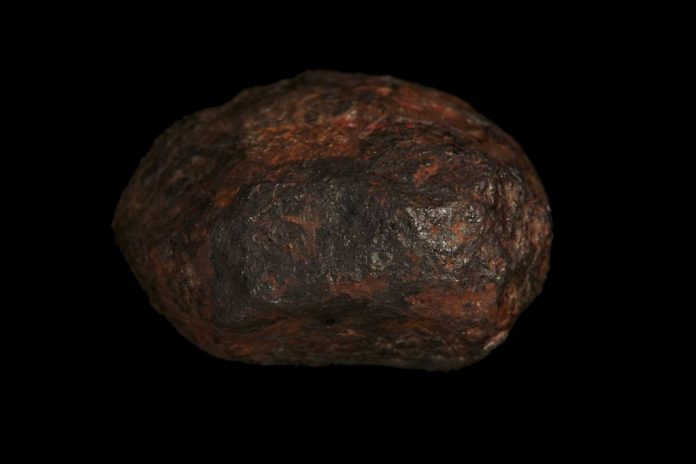A never-before-seen extraterrestrial mineral was lurking inside a meteorite found nearly 70 years ago.
The meteorite is red and black and deeply scarred from its million-year-plus journey, and certainly looks the part. The mineral it contains has been christened edscottite.
The mineral was found after close examination of the Wedderburn Meteorite, a lemon-sized chunk of metal found just outside Wedderburn in 1951, and now a part of Museums Victoria’s collection.
We have found many meteorites, but a meteorite from the core of another planet is extremely rare.
Over the years several inquisitive scientists from around the world, desperate to study it, have managed to secure slices; only 71 grams of the original 220-gram rock are still held within the museum’s vaults.
A team from CalTech in the US managed to get their hands on a slice in 2018, to see if it contained any rare minerals.
A mineral is an arrangement of atoms in different shapes. Diamond, for example, is an arrangement of carbon atoms. Graphite in the tip of a pencil is carbon too, but arranged in a different structure.
Inside the meteorite, sandwiched between other layers of minerals, the researchers found a thin sliver of a new material. Under a microscope, it resembles tiny white crystals.
The mineral, they discovered, is made of iron and carbon atoms mixed together into a certain pattern. They named it edscottite, after Edward Scott, a pioneering cosmochemist at the University of Hawaii.
“This meteorite had an abundance of carbon in it. And as it slowly cooled down, the iron and carbon came together and formed this mineral,” says Dr Stuart Mills, Museums Victoria’s senior curator of geosciences.
Scientists have come across edscottite before, inside smelters. It is one of the phases iron goes through when it is smelted into steel.
But they have never seen it naturally occurring. And minerals only get a name when you can find them in nature.
“We have discovered 500,000 to 600,000 minerals in the lab, but fewer than 6000 that nature’s done itself,” says Dr Mills.





























